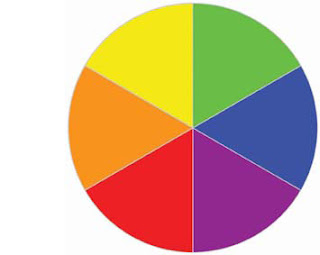
When I wrote “Stay away from color!” it occurred to me that rather than just being entirely negative, I should try to offer some helpful advice, so here it is.
I believe that most color machine applications are really monochrome apps that just need optimized lighting and/or appropriate lens filters. Unless you actually need to differentiate between two close shades, lighting and filters can be used to selectively make objects in your image either dark or light. Let me give you a few pointers before sending you off to a web site I rate highly.
Pointer 1: match the wavelength of the light to the color of the target.
The rule to remember is “like colors lighten.” This means that if you shine a red light on a red target a lot of light will reflect back to a monochrome camera. Thus the red object will appear white in the image. Conversely, when red light falls on a green object very little will be reflected and the object will appear dark in the image.
Pointer 2: use a lens filter to determine what wavelengths reach the camera. Typically you’d use a bandpass filter to ensure detection of a narrow – maybe 20nm – spread of wavelengths. This way you can illuminate the object with white but set the camera up so that only say blue light reaches the sensor. As a side note, I like to use the filtering approach to cut out any ambient light that might find its way in to my system.
So where do you go for more information? Well for basics of using different colors of lighting, check out Advanced Illumination, and for filters there is only one place to go: Midwest Optical Systems Inc.
I believe that most color machine applications are really monochrome apps that just need optimized lighting and/or appropriate lens filters. Unless you actually need to differentiate between two close shades, lighting and filters can be used to selectively make objects in your image either dark or light. Let me give you a few pointers before sending you off to a web site I rate highly.
Pointer 1: match the wavelength of the light to the color of the target.
The rule to remember is “like colors lighten.” This means that if you shine a red light on a red target a lot of light will reflect back to a monochrome camera. Thus the red object will appear white in the image. Conversely, when red light falls on a green object very little will be reflected and the object will appear dark in the image.
Pointer 2: use a lens filter to determine what wavelengths reach the camera. Typically you’d use a bandpass filter to ensure detection of a narrow – maybe 20nm – spread of wavelengths. This way you can illuminate the object with white but set the camera up so that only say blue light reaches the sensor. As a side note, I like to use the filtering approach to cut out any ambient light that might find its way in to my system.
So where do you go for more information? Well for basics of using different colors of lighting, check out Advanced Illumination, and for filters there is only one place to go: Midwest Optical Systems Inc.





No comments:
Post a Comment